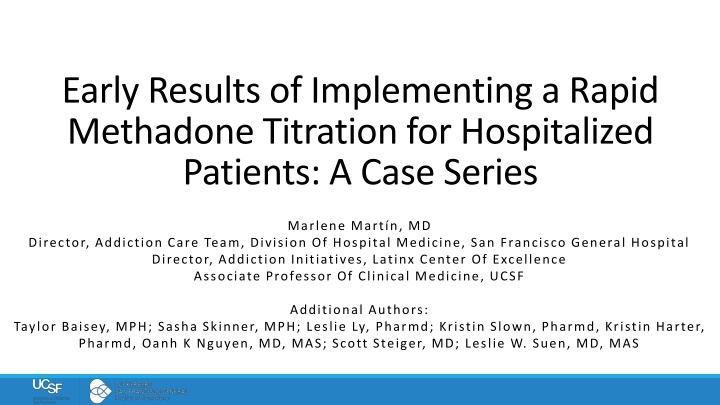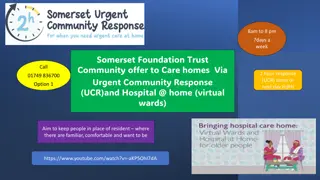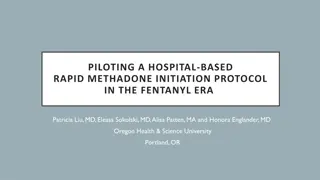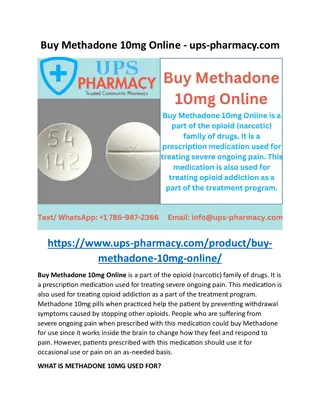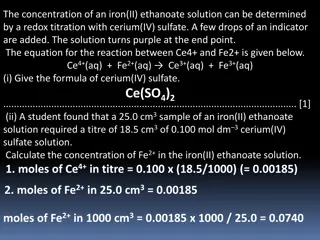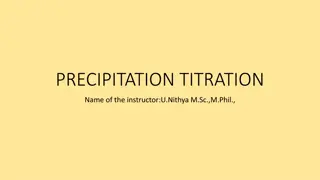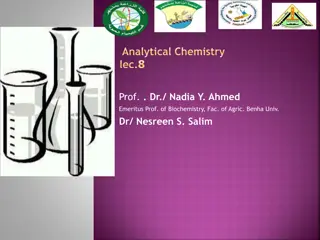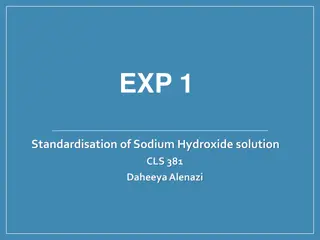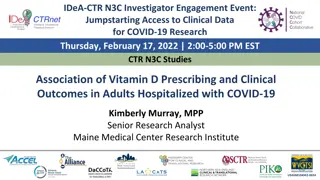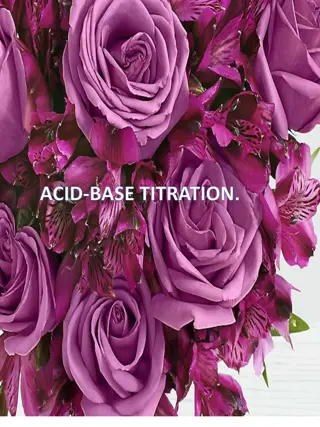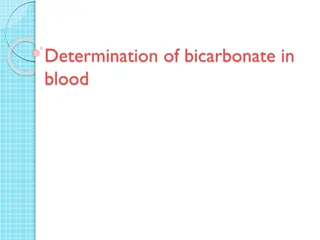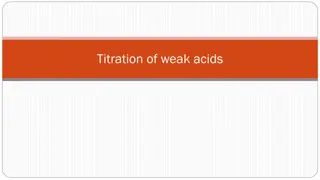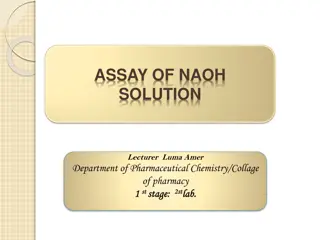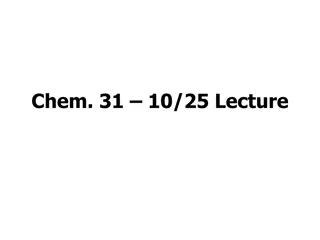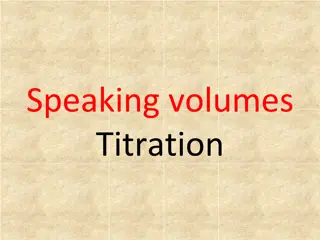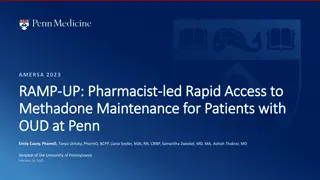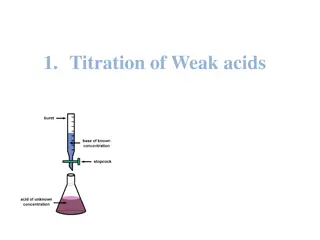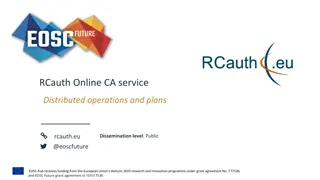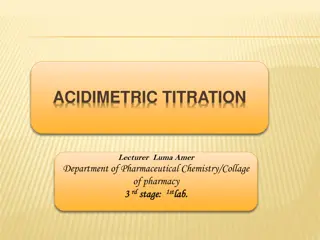Implementing Rapid Methadone Titration for Hospitalized Patients
This case series explores the implementation of a rapid methadone titration protocol for hospitalized patients with opioid use disorder. The study aims to improve opioid withdrawal and treatment outcomes while understanding the effectiveness and adverse events during the pilot phase. Set in an urban academic hospital in San Francisco, the pilot program targets patients initiating methadone through rapid titration to address challenges associated with fentanyl use in the hospital setting.
Download Presentation

Please find below an Image/Link to download the presentation.
The content on the website is provided AS IS for your information and personal use only. It may not be sold, licensed, or shared on other websites without obtaining consent from the author.If you encounter any issues during the download, it is possible that the publisher has removed the file from their server.
You are allowed to download the files provided on this website for personal or commercial use, subject to the condition that they are used lawfully. All files are the property of their respective owners.
The content on the website is provided AS IS for your information and personal use only. It may not be sold, licensed, or shared on other websites without obtaining consent from the author.
E N D
Presentation Transcript
Early Results of Implementing a Rapid Methadone Titration for Hospitalized Patients: A Case Series Marlene Mart n, MD Director, Addiction Care Team, Division Of Hospital Medicine, San Francisco General Hospital Director, Addiction Initiatives, Latinx Center Of Excellence Associate Professor Of Clinical Medicine, UCSF Additional Authors: Taylor Baisey, MPH; Sasha Skinner, MPH; Leslie Ly, Pharmd; Kristin Slown, Pharmd, Kristin Harter, Pharmd, Oanh K Nguyen, MD, MAS; Scott Steiger, MD; Leslie W. Suen, MD, MAS AMERSA 2024: Rapid Methadone Titration
Disclosures None AMERSA 2024: Rapid Methadone Titration
Background Fentanyl and its potent analogues have complicated opioid withdrawal and opioid use disorder (OUD) treatment during hospitalization Undertreated opioid withdrawal leads to negative outcomes delayed hospitalizations, self-directed discharges, and in-hospital drug use Management of opioid withdrawal and OUD during hospitalization is evolving to meet these challenges Thakrar AP et al, JAMA 2023. Grewal HK et al, Drug Alcohol Rev 2015. Englander H et al, JAMA IM 2024. AMERSA 2024: Rapid Methadone Titration
Background: Changes in OUD/withdrawal Management among Hospitalized Patients using Fentanyl Buprenorphine: Low-dose, overlap and injection methods OR Full opioid agonists Methadone: Rapid methadone titrations (RMT) We developed and piloted a RMT for patients with OUD and daily fentanyl use Sokolski E et al, JAM 2023. Thakrar AP et al, Addiction Sci Clin Practice 2023. Liu P et al, JAM 2024. AMERSA 2024: Rapid Methadone Titration
Objectives Improve opioid withdrawal and OUD treatment among hospitalized patients initiating methadone through RMT Understand RMT implementation and adverse events during the first 12 weeks of this pilot AMERSA 2024: Rapid Methadone Titration
Methods AMERSA 2024: Rapid Methadone Titration
Setting Urban, safety-net academic hospital with an electronic health record (EHR) in San Francisco Interprofessional Addiction Consult Team (ACT) Fentanyl is the prominent opioid in the drug supply AMERSA 2024: Rapid Methadone Titration
RMT Development & Implementation Interprofessional Addiction Pharmacy & Therapeutics Subcommittee Limited to patients followed by Addiction Consult Team Day Traditional Methadone Dosing Rapid Methadone Dosing 1 Up to 40mg 2 Up to 50mg 3 Up to 60mg Up to 60mg Up to 80mg Up to 100mg 4+ Increase by 5-10mg up to every 3-5 days thereafter for opioid withdrawal/cravings Note: Daily doses of methadone 80-100mg associated with improved outcomes (Strain, JAMA 1999) Increase by 10-20mg up to every 3 days thereafter for opioid withdrawal/cravings AMERSA 2024: Rapid Methadone Titration
Inclusion and Exclusion Criteria INCLUSION EXCLUSION Adults 18-64 Self-reported daily fentanyl use Newly initiating methadone between 9/11/23 and 12/3/23 Followed by ACT End-stage organ damage (kidney, heart, lung) or critical illness (sepsis) For this case series we also excluded: Pregnant, incarcerated, active opioid treatment program enrollment Started on methadone by primary team 48h before initial ACT visit or started RMT 48h after ACT visit Received RMT but met exclusion criteria AMERSA 2024: Rapid Methadone Titration
Data Sources & Outcomes Abstracted electronic health record data including demographic, clinical, and hospitalization characteristics Substance use disorders, daily hospital methadone doses, and additional full acting opioid doses in morphine milliequivalents (MME) Primary outcome of interest: adverse events Chart documented adverse event of sedation, falls, naloxone administration, intensive care unit transfer, intubation, and death Secondary outcomes: Median time to 100mg of methadone, Full agonist opioid doses during each hospital day Self-directed discharge AMERSA 2024: Rapid Methadone Titration
Adverse Events For patients with adverse events, we reviewed: Additional sedating medications Acute kidney injury Day of occurrence of adverse event within hospitalization Subsequent clinician intervention Author group determined likelihood of being related (unrelated, possibly, probably, or definitely related) to RMT by majority consensus AMERSA 2024: Rapid Methadone Titration
Results AMERSA 2024: Rapid Methadone Titration
Hospitalizations assessed for methadone initiation (n=85) Consort diagram of Hospitalizations Assessed for New Methadone Initiation & those that Received Rapid Methadone Titration (RMT) Excluded from study (n=30 hospitalizations representing 25 unique patients) Pregnant (n=16) Incarcerated/in custody (n=4) Received methadone 48 hours before ACT evaluation (n=5) Began RMT 48 hours after ACT evaluation (n=3) Received RMT but had contraindications (n=2) Assessed for RMT (n=55 hospitalizations representing 47 unique patients) Excluded, did not receive RMT (n=36 hospitalizations representing 30 unique patients) End stage organ damage/severe illness (n=17) Did not report daily fentanyl use (n=12) Somnolence (n=4) Unknown (n=3) Eligible for and received RMT (n=19 hospitalizations representing 17 unique patients) AMERSA 2024: Rapid Methadone Titration
Race/Ethnicity, n (%) Black or African American N (%) 1 (5.9) 0 (0.0) 14 (82.4) 2 (11.8) Sociodemographic & Clinical Characteristics of Patients who received RMT (n=17) Latine White Other Gender Identity, n (%) Female Male 2 (11.8) 15 (88.2) 40.0 (34.0-43.0) Age (years), median (IQR) Housing status, n (%) Housed Houseless 4 (23.5) 13 (76.5) Concurrent SUD, n (%) Alcohol 3 (17.6) 3 (17.6) 11 (64.7) 13 (76.5) Benzodiazepine Tobacco Stimulants History of past medication for addiction treatment, n (%) Both 10 (58.8) 13 (76.5) 14 (82.4) 0 (0.0) Buprenorphine Methadone Neither AMERSA 2024: Rapid Methadone Titration
Characterization of adverse events, responses, and likelihood of each resulting from RMT among hospitalizations who received RMT (n=19) # Type Response Day of methadone titration 2 Methadone dose during event (mg) 60.0 Concurrent Substance Use Disorders Methamphetamine , Tobacco Methamphetamine , Tobacco Other sedating medications/ factors Hydromorphone, Oxycodone Hydromorphone, Oxycodone Likelihood related to RMT Possibly 1 Oversedation Monitoring 2 Oversedation 2 40.0 Possibly Methadone dose maintained for a day Methadone dose decreased by 10 mg 3 Oversedation 6 80.0 Probably Methamphetamine , Benzodiazepines Gabapentin, Hydromorphone, Acute Kidney Injury Gabapentin, Hydromorphone, Olanzapine, Oxycodone 4 Oversedation 14 120.0 Possibly Alcohol, Methamphetamine Methadone dose decreased by 10mg AMERSA 2024: Rapid Methadone Titration
Additional Findings 1 (5.3%) self-directed discharge 2 patients received RMT despite meeting exclusion criteria 1 had end-stage renal disease and had sedation that was thought to be possibly RMT-related AMERSA 2024: Rapid Methadone Titration
Conclusions AMERSA 2024: Rapid Methadone Titration
Summary of Findings 1 in 3 assessed for RMT received it and those who did not receive it were appropriate excluded 1 in 4 patients who received RMT experienced sedation though no other adverse events witnessed during hospitalization Median methadone dose 100mg by day 6 Low self-directed discharge rates AMERSA 2024: Rapid Methadone Titration
Limitations Small case series based on retrospective chart review reporting observational data, limiting causality and generalizability No outcome and follow-up data to show impact (e.g., linkage, treatment retention) beyond hospitalization In-hospital substance use could have contributed to some of the oversedation RMT initiated by the ACT, potentially limiting implementation among hospitals without a consult service AMERSA 2024: Rapid Methadone Titration
Conclusions Adds to the growing evidence for RMT with careful patient selection for patients with fentanyl use disorder initiating methadone Well tolerated, even in patients receiving FAO and with high rates of concurrent substance use disorders without critical illness RMT may relieve opioid withdrawal and help patients complete hospitalization AMERSA 2024: Rapid Methadone Titration
Thank You! Questions? ACT.UCSF.EDU marlene.martin@ucsf.edu @MarleneMartinMD AMERSA 2024: Rapid Methadone Titration
